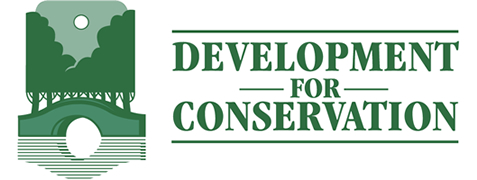
07 Jul Will You Have Enough Prospects to Make Your Annual Giving Goal?
8 July 2025
By David Allen, Development for Conservation
How will we ever raise $100,000 this year?!?
It’s not too soon to think about making your end of year fundraising goals. Sure you could just send out the annual appeal letter with the “please consider making a special gift this year” message, cross your fingers and hope for the best.
But where’s the fun in that?
OR – If you can make a goal tangible, it will help you imagine it being real, and if you can make it real, you can make it likely.
(And frankly, if it’s not possible, you’re better off finding that out early, right?)
A gift chart can help. Here’s how.
Most of us are familiar with the basics of a gift chart – a list of gifts needed to make a specific goal with higher-level gifts listed first and smaller gifts listed below in descending tiers, sometimes called a donor pyramid.
Gift charts are commonly used in capital campaigns – and rarely used outside of campaigns.
But you can also use them for annual fundraising. Here’s how you might want to go about constructing one from scratch.
Prepare a theoretical gift chart first.
- Create a “lead gifts” category that adds to about 25% of the goal. That might be one person; it might be three or four. Add sub-levels as needed.
- Create a “mid-level” group of about 30 people who collectively represent 40% of the goal. Add sub-levels as needed.
- And create a “general gifts” group of everyone else who collectively add to 35%.
You’ll find a sample gift chart using the $100,000 example toward the bottom of this post.
Next assign the number of prospects you will need for each level and/or sublevel.
- For the topmost lead gift(s), you’ll need five prospects for each gift.
- For every other level, you’ll need a ratio of 3:1.
Now assign known donors to each of the prospect lines. These may be individuals, businesses, or foundations, but there should be a specific person envisioned for each ask. Who will be making these gifts?
Last, start at the top and start asking – in person if possible, by phone or letter if not.
There are several advantages of thinking and planning like this:
- First, it forces us to think and plan in terms of asking the largest prospects first.
- It also forces us to think and plan to ask for specific amounts of money, instead of “please be generous.”
- If the top gifts do not come in as expected, and it therefore looks like we won’t make those revenue goals, it gives us the opportunity to adjust the budget before all the expenses have been committed.
And here’s a few final tips:
- Aim high by at least 10%. (Just in case Murphy shows up.)
- Make ask judgements based on what they gave last year, not necessarily what “everyone knows they could give.” This generally means not asking for more than four times their last year’s gift.
- Make all the asks for each level even if the first one is successful. (If you were looking for one gift at $10,000 would it really kill you to have three?)
Here’s an example
Cheers, and have a great week!
-da
PS: Your comments on these posts are welcomed and warmly requested. If you have not posted a comment before, or if you are using a new email address, please know that there may be a delay in seeing your posted comment. That’s my SPAM defense at work. I approve all comments as soon as I am able during the day.
Photo by Veronika Andrews courtesy Pixabay




Rob Robertson
Posted at 09:22h, 08 JulyThank you for this concise guide to get us thinking about our own pyramid. I would be interested to learn more about how to qualify a prospect for a given ask amount.